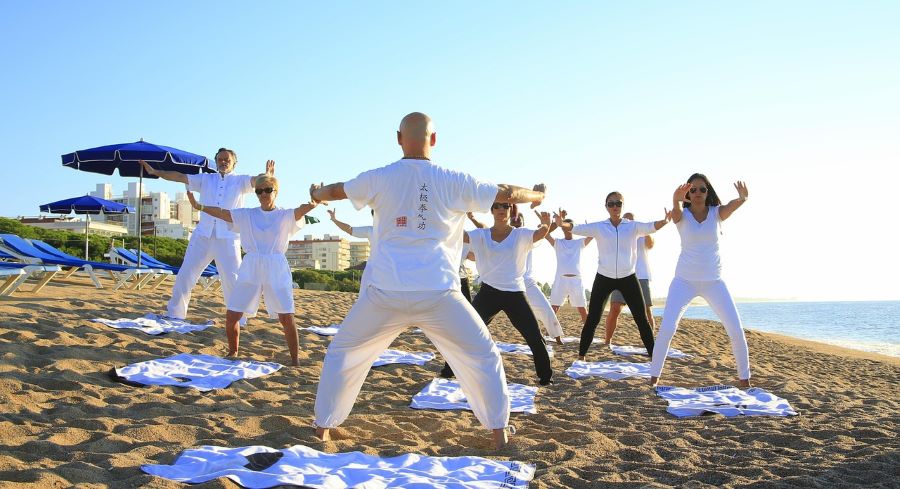Ever sat by a loved one’s side and just listened, heart wide open? That’s the essence of caring science mindful practice. It’s not a complicated philosophy. It’s about being truly present, aware, and kind—in the moment. Think of it as holding space for someone with your full attention, like offering a quiet shelter during a storm.
Let’s explore this beautiful approach together. Whether you’re a nurse, a caregiver, or simply someone who wants to live more meaningfully, caring science offers a gentle path toward healing through presence.
What Is Caring Science Mindful Practice?
At its core, caring science mindful practice blends the wisdom of Jean Watson’s Caring Science with the gentle clarity of mindfulness. It’s not about fixing or diagnosing. It’s about caring with awareness, honoring the whole person—body, mind, and spirit.
Jean Watson’s theory encourages caregivers to treat each interaction as sacred. When paired with mindful awareness, each moment becomes a chance to support healing—not just physical, but emotional and spiritual too.
So what are mindful practices in this context?

These can be as simple as:
-
Taking a deep breath before entering a patient’s room.
-
Making eye contact without rushing.
-
Noticing your own feelings without judgment.
They may seem small, but they hold great power. Think of them as tiny anchors grounding you in compassion.
Why It Matters in Everyday Life
In a world that feels constantly rushed, being mindful feels like pressing a “pause” button. It’s about showing up—not just physically, but fully.
Let’s say you’re a nurse handling back-to-back shifts. You’re tired, overwhelmed, and emotionally stretched. Instead of going on autopilot, mindful caring invites you to:
-
Pause for a few seconds between patients.
-
Gently check in with yourself: How am I feeling right now?
-
Connect with your patient like a fellow human, not just a task.
This presence can change everything. It builds trust. It reduces stress—for both of you. And yes, it even supports healing.
And the best part? You don’t need extra time. You just need intention.
How to Practice Mindful Awareness Daily
Practicing mindful awareness doesn’t require a quiet room or incense (though hey, if that helps, go for it!). It’s about weaving awareness into what you already do.
Here’s how beginners can start:
1. Start with the Breath
Before beginning your shift or a difficult conversation, take three slow breaths. Notice the air. Feel it enter your body. Let it go. This anchors you in the now.
2. Slow Down Micro-Moments
While washing hands, instead of zoning out, feel the water. Listen to its sound. Smell the soap. You’re practicing mindfulness right there.
3. Use Intentional Listening
When someone speaks, really hear them. Don’t jump in with a solution. Let your eyes and heart listen too.
4. Reflect, Don’t React
If someone says something upsetting, pause. Breathe. Respond from calm, not chaos. That’s where caring lives.
These are mindful practice examples you can try anywhere—at work, home, or while caring for someone you love.
Simple Ways To Start A Mindful Practice Today
Starting a mindful practice might sound like something out of a retreat brochure, but truthfully, it can begin right at your kitchen table. You don’t need special clothes, a yoga mat, or even silence (though that helps sometimes). What you need is the willingness to pause, notice, and breathe—right where you are.

Mindful practice isn’t about clearing your mind like a blank screen. It’s more like opening a window and letting fresh air in. Thoughts still pass by, but you watch them gently, without chasing after them.
Let’s look at a few simple, real-life ways to get started:
1. Start With One Minute Of Stillness
You don’t need 20 minutes to meditate. Just try one full minute of sitting in silence with your eyes closed. Set a timer, put your phone down, and feel your breath go in and out. That’s it. Do this when you wake up or right before bed.
It may not feel like much, but that minute can bring a sense of calm that sets the tone for your whole day. Some nurses who study caring science mindful practice even use this technique between patients. It helps them reset and stay present.
2. Eat One Meal Without Distractions
No phone. No scrolling. Just you and your food. Try paying attention to each bite—how it tastes, how it feels. Notice the crunch, the texture, the warmth. This is called mindful eating, and it’s a powerful way to slow down.
You’ll be surprised how different your favorite lunch tastes when you really pay attention. This small practice also helps you feel fuller and more satisfied, both physically and emotionally.
3. Use Anchors Like Sound Or Touch
If sitting still feels like a challenge, you’re not alone—and that’s totally okay. One gentle way to begin a caring science mindful practice is by using simple anchors. It could be the sound of a soft bell or the quiet comfort of your hands resting together. These small sensory cues can gently guide your attention back when your thoughts start to wander.
There’s a nurse I remember who always carried a smooth stone in her scrub pocket. On hectic days, when stress crept in, she’d pause, hold the stone, and whisper to herself, “I’m here now.” That tiny moment of mindful awareness became part of her daily rhythm—a quiet, personal version of caring science mindful practice that helped her stay present and calm through even the hardest shifts.
4. Take A Walk Without A Destination
Instead of walking with a goal in mind, try walking just to be. Let your steps become part of your caring science mindful practice. Feel the ground beneath your feet. Notice the breeze brushing your skin, the shifting clouds, or the birds fluttering by. This kind of walk gives your mind a gentle rest from all the planning and thinking.
Some people call it “walking meditation,” but at its core, it’s simply about being where your feet are. You don’t need a quiet trail—this kind of mindful practice can happen on your lunch break or while walking your dog. It’s a small way to connect with the present, one step at a time.
5. Journal What You Notice
After trying one of these practices, take a few minutes to write down what you felt or noticed. Don’t worry about grammar or making sense. Just let your thoughts flow.
This kind of reflection is part of caring science. It’s about witnessing your own human experience with kindness. Over time, your journal becomes a place of gentle learning—a story of your growing awareness.
Starting a mindful practice isn’t about being perfect or Zen all the time. It’s about being real. Some days you’ll feel scattered. Other days you’ll feel still. That’s okay. Just showing up, even in small ways, is enough.
And remember, caring science mindful practice doesn’t mean you have to be a nurse or healer. It simply means you’re choosing to live with a little more attention and care. Whether you’re washing dishes, feeding your baby, or pausing during a tough conversation, these little mindful moments matter.
Caring Science As Sacred Science
Jean Watson refers to caring science as sacred science because it touches something deeper than procedures or checklists. It honors connection. It reminds us we’re not machines—we’re hearts walking around in human form.
In this sacred space, the caregiver and the one being cared for both experience healing. It’s mutual. It’s profound. And it’s very human.
When you blend mindful practice with caring science, you create sacred moments—ordinary, yes, but full of meaning.
Imagine holding a patient’s hand during a scary moment. No words, just your steady breath and gentle presence. That’s sacred. That’s healing.

Examples of Mindful Practice in Healthcare
Let’s look at what mindful practice might look like in real healthcare settings.
Case 1: The Tired Nurse
Maria, an ICU nurse, used to rush from room to room. One day, she tried something different. Before entering each room, she paused, took a breath, and thought, “I see you. I am here for you.” It shifted her day. Patients felt heard. Maria felt calmer.
Case 2: The New Caregiver
David, caring for his aging mother, started practicing gratitude. Each morning, he’d name one thing he appreciated—even on hard days. This simple mindful awareness helped him stay kind and patient through long hours.
Mindfulness doesn’t mean perfection. It means noticing your inner world and choosing care anyway.
How This Helps Caregivers and Professionals
Caring science mindful practice isn’t just good for those we care for—it’s good for the caregiver, too.
Benefits include:
-
Less burnout: Mindfulness helps reduce emotional exhaustion.
-
Better focus: Present minds make fewer mistakes.
-
Stronger relationships: Empathy flows more naturally.
-
Emotional balance: You feel your feelings instead of stuffing them down.
Over time, these moments of awareness create a more connected, fulfilling way to live and work.
FAQ’s
1. What are mindful practices in daily life?
Mindful practices include anything done with full awareness. Examples: breathing slowly, noticing your surroundings, or listening without interrupting.
2. Can anyone learn caring science mindful practice?
Absolutely. Whether you’re a nurse, parent, teacher, or friend—this approach is universal. It starts with presence.
3. How do I begin if I’m overwhelmed?
Start small. Even one mindful breath during your day counts. Over time, it becomes more natural.
4. Is caring science only for nurses?
While it’s rooted in nursing theory, its principles apply to all caring relationships—between friends, family, or in any helping role.
Final Thoughts
Caring science mindful practice is a reminder: healing isn’t just about medicine—it’s about being present for each other. In a world spinning fast, this practice is like a quiet pause button—a space where kindness and presence matter most.
So, next time you feel rushed, take a breath. Look someone in the eye. Let your heart stay open.
You might be surprised how healing that simple act can be—for them and for you.

